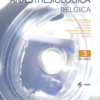Incidence of brachial plexus injury after cardiac surgery: a retrospective study
brachial plexopathy, peripheral nerve injury, cardiac surgery, median sternotomy, malpractice
Published online: Sep 19 2023
Abstract
Background: Brachial plexopathy is a rare but debilitating injury associated with cardiac surgery. The reported incidence varies widely. Several risk factors have been described, including both patient and surgical factors.
Objectives: The aim of this study is to (1) investigate the incidence of brachial plexus injury in cardiac surgery in a three-year period in our hospital, (2) give an overview of risk factors and possible mechanisms of brachial plexopathy, and (3) consider the legal ramifications of these injuries.
Design and setting: single centre retrospective study
Methods: Data were collected retrospectively from all patients undergoing cardiac surgery in a major hospital in a three-year year period (N = 1305). Hospital records were screened for patients who underwent an electromyography after their surgery. Those cases were further investigated for brachial plexus injury. Patient characteristics and data applying to known risk factors for peroperative nerve injury were obtained.
Results: Brachial plexus injury was observed in 7 out of 1305 patients (0.54%). All patients with brachial plexus injury underwent coronary artery bypass surgery with internal mammary artery harvesting at the side of the injury. No further analysis concerning risk factors was performed since only seven cases were identified and underreporting was suspected.
Conclusion: Our data suggest that brachial plexus injury in cardiac surgery might be associated with asymmetrical sternal retraction during internal mammary artery harvesting. These findings correspond with previous reports, although it would be interesting to further investigate the importance of the exact placement and type of retractor used.
